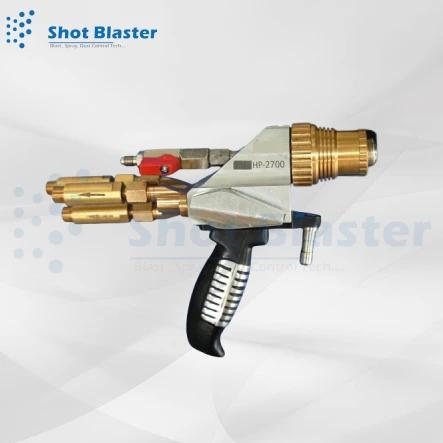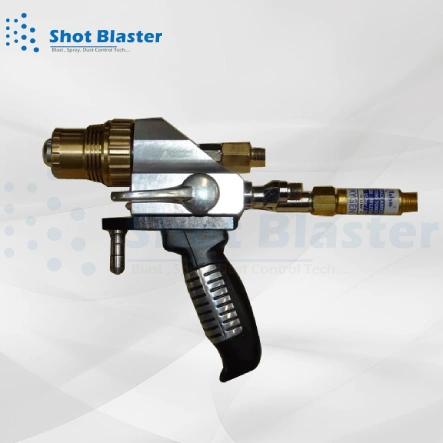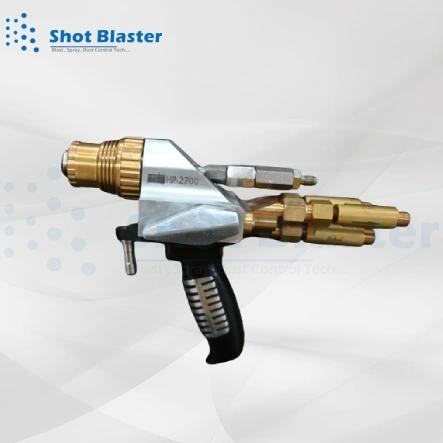HVOF Gun
In an HVOF Gun, fuel gas is burnt with oxygen in a high-velocity, high-temperature flame (often hydrogen or kerosene). Prior to deposition onto the substrate, this flame is utilized to accelerate powdered coating material to high speeds. HVOF coatings are well known for their superior quality, securely bonded structure, and thickness. They have remarkable hardness, adhesion, and wear resistance.
Metals, ceramics, and cermets (ceramic-metal composites) are just a few of the materials that may be employed with HVOF. Alloys based on nickel, chromium, and tungsten carbide are commonly used to achieve wear and corrosion resistance. The optimum applications for HVOF coatings are those that call for high levels of wear resistance, corrosion protection, and thermal barrier qualities. Examples include equipment used in the oil and gas industry, as well as industrial and aviation parts. Low porosity, high density, and strong adhesion are just a few of the outstanding mechanical qualities that HVOF coatings have to offer. Compared to certain other thermal spray technologies, the coatings are frequently more linked and denser.
Plasma Spray Gun
By using a high-voltage electric arc, plasma spray gun entails ionizing a gas into a plasma state (usually argon or nitrogen). The plasma is used to melt and drive powdered coating material onto the substrate. Depending on the process variables, plasma spray coatings can have varying densities, porosities, and structures. They might be thick coatings or ones that are quite permeable. Plasma spray gives users the freedom to apply a wide range of materials, even some that are challenging to melt using conventional techniques. It is appropriate for some applications, such as TBCs, since it may produce coatings with different porosities.
Due to its flexibility and versatility, plasma spray may be employed with metals, ceramics, polymers, and even composite materials. Wear resistance, thermal barrier coatings (TBCs), and corrosion protection are some uses for plasma spray coatings. They work in industries including energy, electronics, aviation, and autos.
Applications of HVOF & Plasma Spray Gun
HVOF coatings are especially well suited for high-wear and high-stress applications as they usually have greater bonding capacities and denser structures. Plasma spray is better suited for a wider variety of applications since it offers a wider variety of coating materials.
Depending on the particular coating material employed, both methods have the ability to offer significant corrosion resistance and heat barrier properties. Depending on the required thermal spray coating qualities, the kind of substrate, and the demands of the particular application, HVOF or plasma spray may be used.







